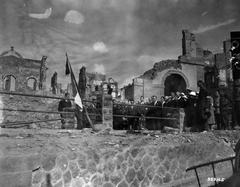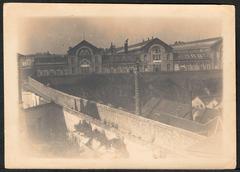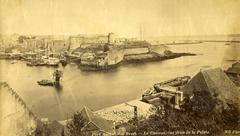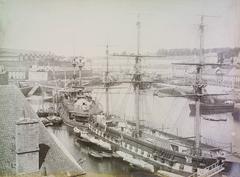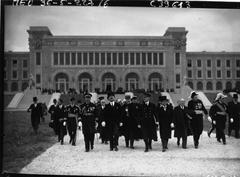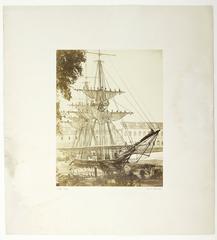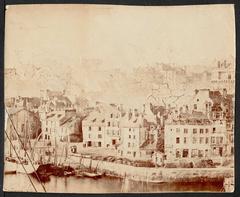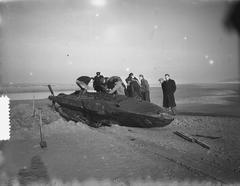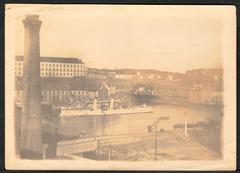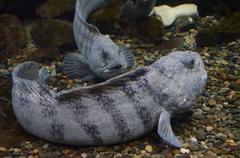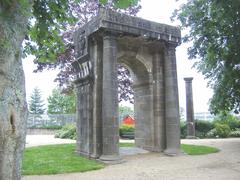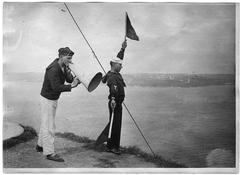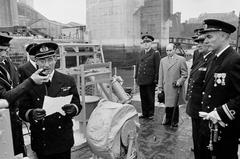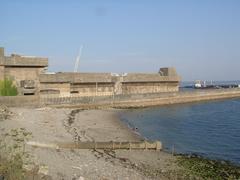US Naval Monument at Brest Visiting Guide
Published Date: 24/07/2024
Introduction
The US Naval Monument at Brest, also known as the Pink Tower, is a historical landmark that stands as a testament to the enduring alliance between the United States and France. Located in the port city of Brest, France, this monument commemorates the significant contributions of the US Navy during World War I. This guide aims to provide an in-depth overview of the monument’s history, architectural features, and practical tips for visitors. Whether you are a history enthusiast or a casual traveler, understanding the story behind this monument enriches the experience of visiting it.
The establishment of the US Naval Monument at Brest is rooted in the collaborative efforts of the US and French navies during World War I. Brest served as a crucial landing point for over 700,000 American troops, making it a pivotal location for the American Expeditionary Forces (AEF) in Europe. The American Battle Monuments Commission (ABMC) decided to erect a memorial in the 1930s to honor these efforts (Naval History and Heritage Command).
The monument’s construction and subsequent destruction during World War II add layers of historical significance. Destroyed by German forces in 1941, it was later rebuilt in 1958 to its original specifications. This act of reconstruction reaffirmed the monument’s historical importance and the resilience of the Franco-American alliance (Wikipedia).
Architecturally, the monument is a 30-meter tall granite tower featuring maritime-themed bas-reliefs by American sculptor John Storrs. Its inscriptions commemorate the achievements of the US and French naval forces during World War I. Managed by the ABMC and listed as a Historic Monument in 2015, the monument continues to be a site of reflection and historical education (Iberian Escapes).
Table of Contents
- Introduction
- Establishment and Early Significance
- Construction of the Monument
- Destruction and Reconstruction
- Architectural Features
- Current Status and Management
- Visitor Experience
- Practical Information for Visitors
- Historical Context and Legacy
- Frequently Asked Questions (FAQ)
- Conclusion
- Sources
Establishment and Early Significance
The US Naval Monument at Brest was erected to commemorate the significant role of the US Navy during World War I. The US Navy established a Naval Operating Base in Brest, France, in June 1917, in collaboration with the French Navy, to counter the threat posed by German submarines (Naval History and Heritage Command). Brest became a crucial landing point for US Army troops, facilitating the deployment of the American Expeditionary Forces (AEF) in Europe. By the end of the war, over 700,000 American troops had passed through Brest, making it a pivotal location for the US military efforts in Europe (Wikipedia).
Construction of the Monument
The American Battle Monuments Commission (ABMC), established in 1923, decided to erect a memorial to honor the achievements of the US Navy in European waters during World War I. Brest was chosen due to its strategic importance as the headquarters of the US naval forces in Europe during the war and as the primary port for the arrival and departure of American troops (Wikipedia). The monument, a 30-meter tall granite tower with a distinctive pink hue, was constructed in the 1930s on Cours Dajot, a prominent location overlooking the port of Brest (Iberian Escapes).
Destruction and Reconstruction
During World War II, the monument was destroyed by the German forces on July 4, 1941, coinciding with US Independence Day. At that time, the United States had not yet entered the war against the Third Reich. The Germans later claimed that the monument was destroyed by a Royal Air Force raid, but credible reports from French civilians indicated that the Germans had prepared and executed the demolition themselves (Wikipedia). The destruction was likely intended to disrupt British air raids, as the tower served as a navigational landmark for Allied bombers.
Following the liberation of Brest in September 1944, the ABMC, under the leadership of General John J. Pershing, initiated efforts to assess and restore American war monuments in Europe. The US Naval Monument at Brest was rebuilt in 1958 as an exact replica of the original structure, reaffirming its historical significance and the enduring legacy of the US Navy’s contributions during World War I (Wikipedia).
Architectural Features
The monument is a square granite tower standing 44 meters tall from the lowest terrace and 30.5 meters from the Cours Dajot level. It features maritime-themed bas-reliefs created by the American sculptor John Storrs, adorning all four sides of the tower (Wikipedia). The inscriptions on the monument, in both English and French, commemorate the achievements of the US and French naval forces during the war. The text reads: “ERECTED BY THE UNITED STATES OF AMERICA TO COMMEMORATE THE ACHIEVEMENTS OF THE NAVAL FORCES OF THE UNITED STATES AND FRANCE DURING THE WORLD WAR” (Wikipedia).
Current Status and Management
The US Naval Monument at Brest is owned by the federal government of the United States and managed by the American Battle Monuments Commission. The maintenance of the monument is overseen by the American military cemetery at Saint-James, located in the Manche department of France (Wikipedia). The monument was listed as a Historic Monument in July 2015, recognizing its cultural and historical importance.
Visitor Experience
The monument is situated midway along Cours Dajot, a scenic promenade that offers panoramic views of the port and the city of Brest. The surrounding area includes an esplanade and a public garden, providing a serene environment for visitors to reflect on the historical significance of the site (Iberian Escapes). Although the interior of the tower is not open to the public, the exterior and the inscriptions provide ample context for understanding the monument’s purpose and significance.
Practical Information for Visitors
- Visiting Hours: The monument is accessible to the public 24/7, but the best time to visit is during daylight hours to fully appreciate the views and inscriptions.
- Tickets: There is no entrance fee to visit the monument.
- How to Get There: Brest is well-connected by train and air. The monument is easily reachable by public transport or a short walk from the city center.
- Nearby Attractions: While in Brest, consider visiting the Brest Castle and the National Maritime Museum, both offering rich historical insights and stunning architecture.
- Accessibility: The area around the monument is accessible to visitors with disabilities, though the terrain can be uneven in places.
- Special Events: Check local listings for special commemorative events, particularly around US Independence Day and Armistice Day.
- Guided Tours: While there are no official guided tours specifically for the monument, local tour guides often include it in broader historical tours of Brest.
- Photographic Spots: The monument and the surrounding Cours Dajot offer excellent opportunities for photography, especially during sunset when the pink hues of the granite are most vibrant.
Historical Context and Legacy
The US Naval Monument at Brest stands as a testament to the enduring alliance between the United States and France, forged during the tumultuous years of World War I. It commemorates the bravery and sacrifices of the US Navy and the American Expeditionary Forces, who played a crucial role in securing victory in Europe. The monument also serves as a reminder of the shared history and values that continue to unite the two nations.
Frequently Asked Questions (FAQ)
-
What are the visiting hours for the US Naval Monument at Brest? The monument is accessible to the public 24/7, but visiting during daylight hours is recommended.
-
How much do tickets cost for the US Naval Monument at Brest? There is no entrance fee to visit the monument.
-
Is the US Naval Monument at Brest accessible to individuals with disabilities? Yes, the area around the monument is accessible, though some terrain may be uneven.
-
What are some nearby attractions to visit? Nearby attractions include the Brest Castle and the National Maritime Museum.
Conclusion
The US Naval Monument at Brest stands as a powerful symbol of the enduring bond between the United States and France, forged during the tumultuous years of World War I. From its initial construction to its destruction and eventual reconstruction, the monument encapsulates the resilience and historical significance of the US Navy’s contributions to the war effort. Visitors to the monument can gain a deeper appreciation of the historical events that shaped the modern world and the enduring ties between these two nations.
For more updates and travel tips, consider following us on social media or downloading the Audiala app. This will help you stay informed about special events, guided tours, and other visitor tips.
Sources and Further Reading
- Naval History and Heritage Command. (n.d.). US Naval Monument at Brest
- Wikipedia. (n.d.). Naval Monument de Brest
- Iberian Escapes. (n.d.). Things to do in Brest
- American Battle Monuments Commission. (n.d.). Brest
